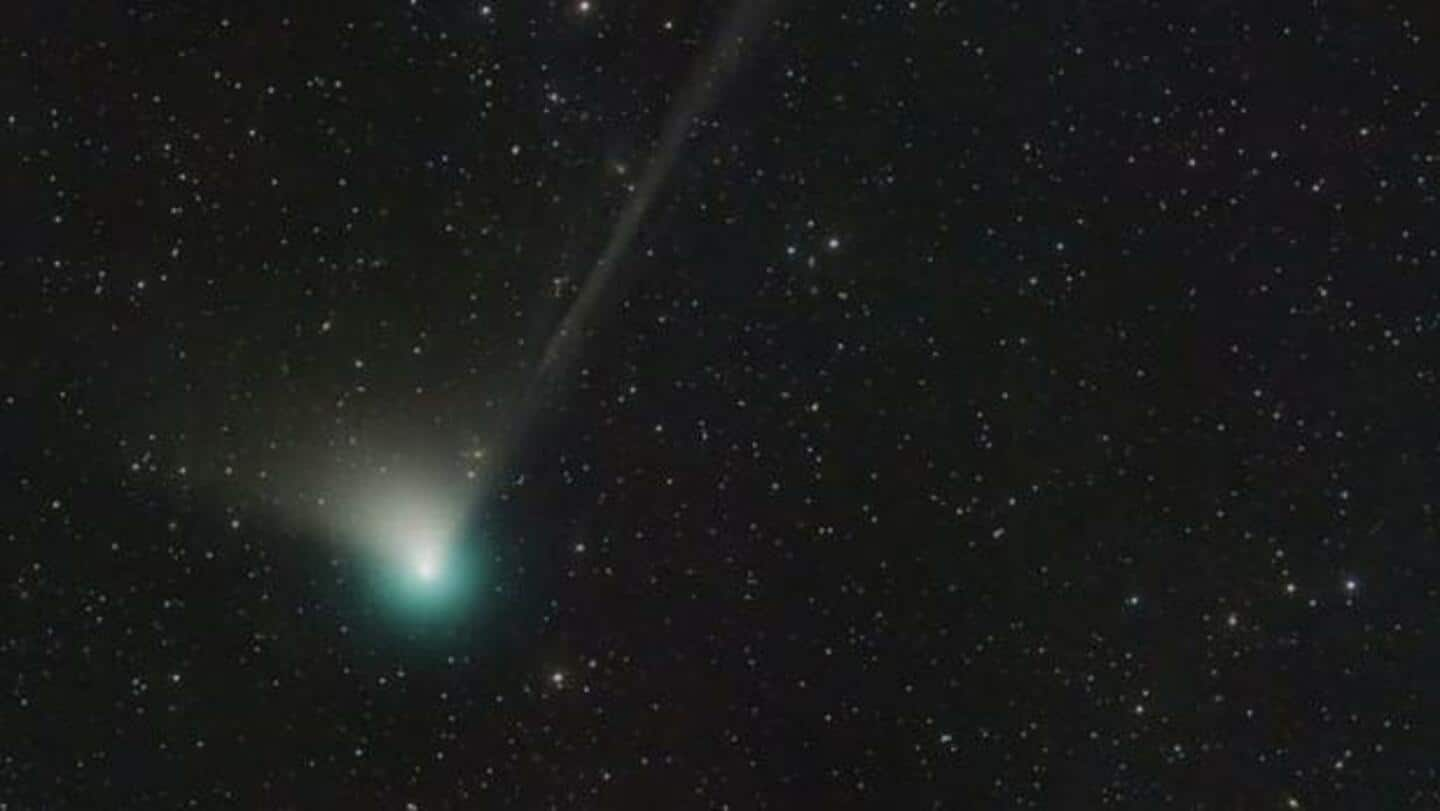
Super-rare comet C/2022 E3's closest approach tomorrow: How to watch
What's the story
A comet that was last seen 50,000 years ago will make its closest approach to Earth on February 1. Comet C/2022 E3 (ZTF) will come within a distance of 42 million kilometers of our home planet. For reference, that is about 28% of the distance between Earth and the Sun. Under the right conditions, the comet might even be visible without any aid.
Context
Why does this story matter?
Given the comet's orbital period of 50,000 years, the last time that it wandered this close to Earth or the Sun should have been in the mid of the last ice age and before the Neanderthals went extinct. C/2022 E3 (ZTF) was first discovered in March 2022 at the Zwicky Transient Facility when it was inside the orbit of Jupiter.
Visibility
The comet will be at its brightest on February 1
According to In-The-Sky.org, comet C/2022 E3 (ZTF) is circumpolar (always above the horizon for any latitude) and hence it'll be visible throughout the night. On February 1, the comet will make its closest approach to Earth and will appear the brightest. While at its perigee, the comet can be spotted in the Camelopardalis constellation, close to the north celestial pole.
Perihelion
The comet was closest to the Sun on January 12
On January 12, Comet C/2022 E3 (ZTF) made a close approach to the Sun or what's called the perihelion. It passed the giant star at a distance of 160 million kilometers making its way to Earth. The comet is said to be observable for days as it approaches our home planet and will then retreat, heading toward the outer solar system.
Comet
C/2022 E3 (ZTF) has been nicknamed the "green comet"
Comets, as they approach the Sun, are heated by radiation from the giant star, and the material at their surface transforms from solid ice to gas in a process called sublimation. Talking about C/2022 E3 (ZTF), it has been nicknamed the "green comet." The green glow is thought to result from the interaction between light from the Sun and diatomic carbon.
Tips
Which is the best time to view the comet?
The easiest times to spot the comet may be on February 5 when the comet is next to the bright star Capella in the Auriga constellation, or between February 9 and February 13 when it will shine near Mars in the Taurus constellation. C/2022 E3 (ZTF) may be visible to the naked eye but can be spotted more easily using binoculars or a telescope.
Information
How to view the comet?
Spot a dark region, away from any bright light source. The comet will be seen as a "faint, greenish smudge" in the night sky. You can check if the comet is visible from your location using In-The-Sky.org tracker.